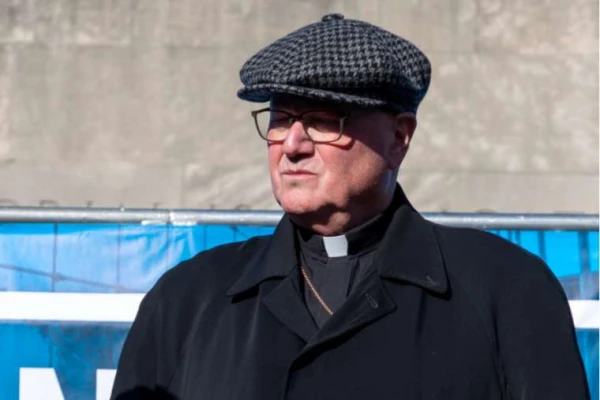
CNA Staff, Jan 29, 2021 / 06:27 pm (CNA).- The Archdiocese of New York announced Thursday that Cardinal Timothy Dolan is quarantining after “close contact” with someone who tested positive for COVID-19. The cardinal does not currently have symptoms.
“Cardinal Timothy Dolan has cancelled all public appearances, including celebrating 10:15 a.m. Sunday Mass at Saint Patrick’s Cathedral, to remain in quarantine after last week having been in close contact with an individual who has tested positive for COVID,” the brief statement said.
The 70-year-old cardinal “has not tested positive, feels fine, and has no symptoms,” it added.
The archdiocese indicated that “others on his staff who also had close contact with this individual” will similarly follow “health and safety protocols as instructed by medical professionals.” The statement did not specify who or how many members of his staff will be under quarantine.
Since 2009, Cardinal Dolan has led more than 2.8 million Catholics in Manhattan, the Bronx, Staten Island, and six counties north of the city.
New York has reached a new peak of COVID-19 cases this month, with more than 10,000 infected per day during January 2021.
Last Thursday, New York Attorney General Letitia James released a 76-page report accusing the administration of Governor Andrew Cuomo of undercounting the number of elderly who died in nursing homes by as much as 50%.
According to the Health Department’s data, there were 8,671 reported COVID-19 deaths in long-term care facilities as of January 18. The report from the Attorney General suggests that many nursing home residents died from COVID in the hospital, resulting in their deaths being reported as hospital deaths.
If you value the news and views Catholic World Report provides, please consider donating to support our efforts. Your contribution will help us continue to make CWR available to all readers worldwide for free, without a subscription. Thank you for your generosity!
Click here for more information on donating to CWR. Click here to sign up for our newsletter.



Leave a Reply